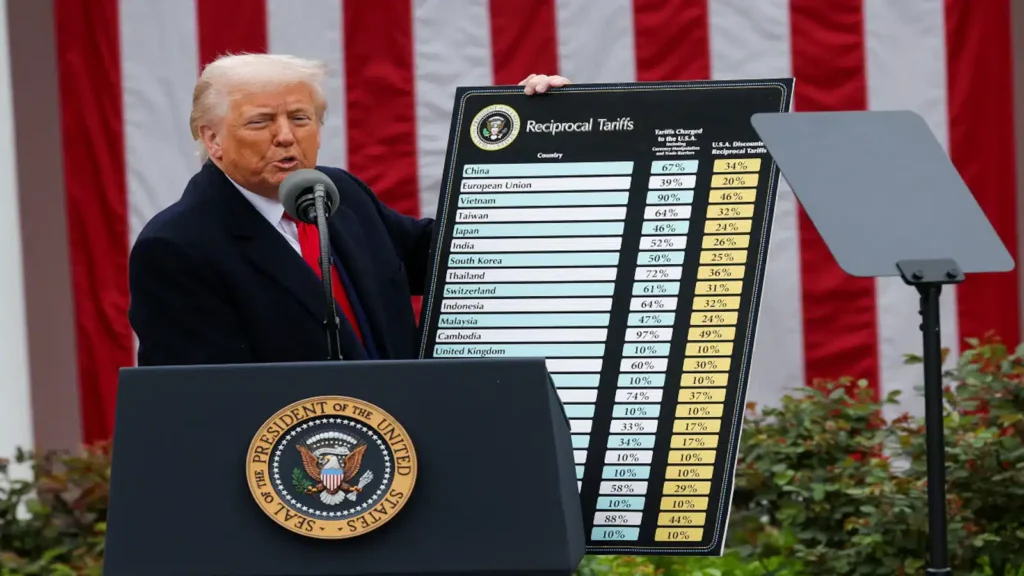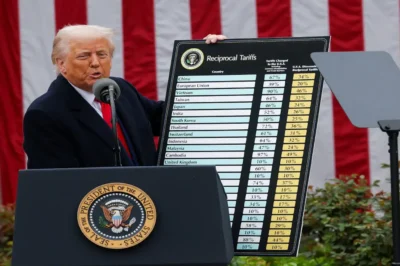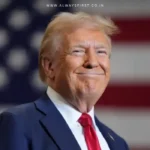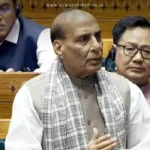
Introduction
In a bold move that has sent ripples through global markets, U.S. President Donald Trump announced a series of new tariffs targeting imports from various countries, including India. These tariffs, set to begin on April 5, 2025, are part of Trump’s “Declaration of Economic Independence,” aiming to address trade imbalances and revitalize American manufacturing.
The Scope of the New Tariffs
The Trump administration has introduced a baseline tariff of 10% on nearly all imports, with higher rates for nations with significant trade surpluses over the U.S. Countries like China and India are facing even steeper “reciprocal” tariffs – 34% for China and 26% for India. These measures are justified by the administration as necessary steps to protect national interests and promote domestic production.
India’s Trade Relations with the U.S.
President Trump has previously criticized India’s trade practices, notably highlighting the high tariffs imposed on U.S. goods. In a recent address, he stated, “India charges us 100% tariffs; the system is not fair to the US, it never was.” This sentiment underscores the administration’s frustration with longstanding trade disparities.
Economic Implications for India
The implementation of a 26% tariff on Indian imports to the U.S. is poised to have significant economic repercussions. Key export sectors such as electronics, gems, and textiles are expected to be most affected, potentially leading to reduced demand and financial strain on exporters. However, pharmaceuticals have been spared from these tariffs, offering a silver lining for that sector.
Comparative Tariff Analysis
The new tariff rate imposed on India surpasses those applied to several other nations. For instance, the European Union faces a 20% tariff, Japan a 24% tariff, and South Korea a 25% tariff. While India’s rate is lower than China’s 54% and Vietnam’s 46%, it remains a substantial increase from previous levels, highlighting the administration’s aggressive stance on trade imbalances.
Potential Global Economic Impact
The introduction of these tariffs is not an isolated event but part of a broader strategy that includes additional duties on countries perceived to have “cheated” the U.S. This approach has elicited concerns about potential inflationary pressures, disruptions to global supply chains, and the possibility of retaliatory measures from affected nations. Analysts warn that such actions could lead to a slowdown in global economic growth and increased prices for consumers worldwide.
Reactions from Affected Nations
Countries like Canada and Mexico have been exempted from these new tariffs, a move that has shifted the focus to nations like China and India. In response to the tariffs, India is considering measures such as reducing tariffs on U.S. imports worth $23 billion to appease the Trump administration. This strategy aims to mitigate the impact of the new duties and maintain favorable trade relations.
Looking Ahead
As the April 5 deadline approaches, businesses and governments worldwide are bracing for the effects of these tariffs. For India, the immediate challenges include navigating the complexities of the new trade environment, addressing potential economic slowdowns, and engaging in diplomatic efforts to resolve trade disputes. The coming months will be critical in determining how these policies reshape global trade dynamics and impact economies across the world.








































Leave a Reply